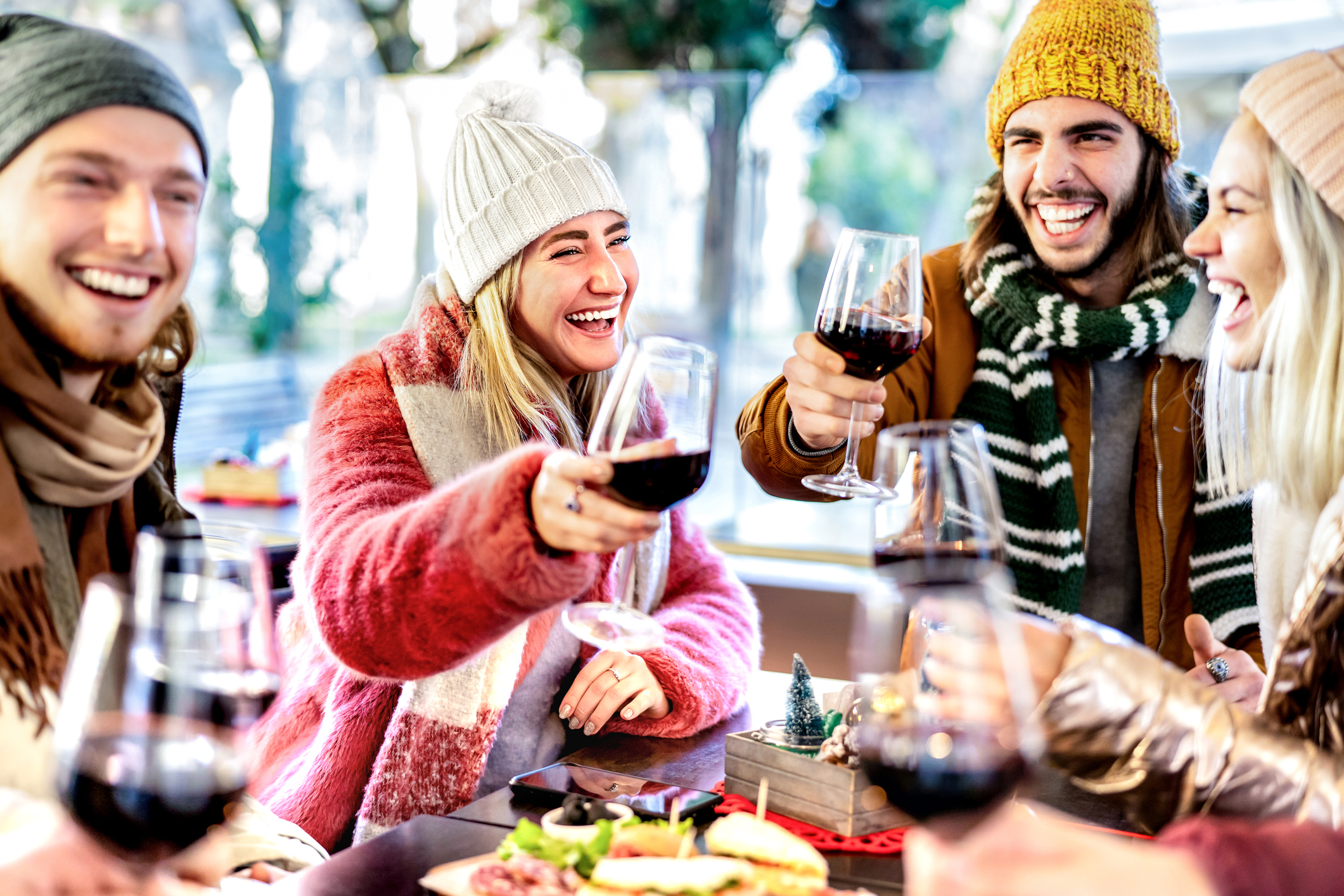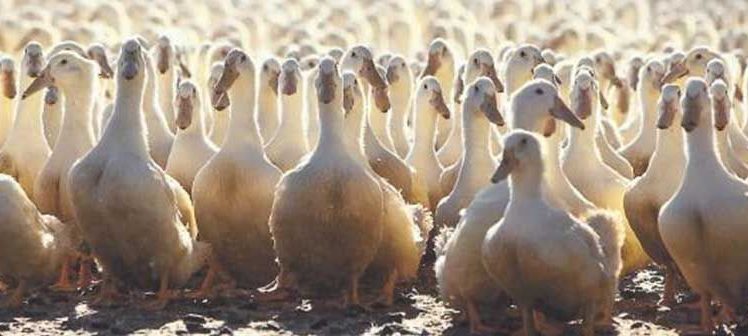Winter on the North Fork Wine Trail: Time to Stop and Smell the Grapes

When winter blows in on the North Fork Wine Trail, things slow down to a more leisurely pace. And though locals might welcome the big drop in visitors and traffic tie-ups after the holidays, many are sorry to see the warm weather go.
But East End residents of the wooly mammal variety feel a little differently. The alpacas and sheep that hold court near the entrance to Jason’s Vineyard in Jamesport are visibly thrilled when the morning frost covers the vines out back.
“The animals are from the mountains of Peru, where it gets really cold,” explains Jeanne Maloney, tasting room manager at Jason’s. “They’re much more lively in the winter. In the summer, we have to hose them down and keep them cool. But they love to hang around outside in January and February.”
Seeing the alpacas in their happy place isn’t the only thing that Maloney enjoys about winter at the vineyard.
“The biggest difference is that there are fewer large groups,” she says. “In the summer, we sometimes get busloads of people who just want to come in and drink. It’s nice to work with smaller groups who are looking for a relaxed wine tasting.”
“Our customers like to come during the winter because they can have a more intimate, one-on-one experience with us,” adds Pindar Damianos, who, along with this family, owns and operates Jason’s, as well as Duck Walk Vineyards in Southold and in Water Mill, and Pindar Vineyards in Peconic.
“Winter is a great opportunity for me to spend more than just a few seconds with each customer,” Damianos explains. “I can ask questions about their families — where they’re from and why they came to visit us. And I can get much more in-depth about our offerings and our winemaking process. It’s just a different feel this time of year.”
Damianos, who spends most of his weekends year-round in Pindar’s tasting room, notes that in addition to live music on weekends all winter, the winery organizes special events for visitors in the off-season.
From January through March, Pindar offers tours and tastings in its barrel cellar, where visitors can sample the flavor profiles of still-fermenting varietals before they make their way from barrel to bottle. Participants at previous barrel tours might have had the chance to sample the pre-release flavor notes of Damianos’ favorite Pindar Vineyards varietal: a robust 2019 Reserve Cabernet Sauvignon that recently scored an impressive 90 out of 100 in Wine Enthusiast. During November, guests can also sign up for the Champagne Tour at Pindar to explore the ins and outs of sparkling winemaking.
Since more sparkling wine is enjoyed on New Year’s Eve than any other night of the year, winter is a prime season to learn more about how the bubbly is curated and produced — and to get educated about the significant differences between the sparkling and non-sparkling winemaking processes. Many wine lovers, including plenty of hardcore oenophiles, have never taken the time to dig into the nuances.
Arguably the best place on the East End to take a deep dive into the world of the carbonated stuff is Sparkling Pointe Vineyards in Southold. Besides producing critically acclaimed Champagne-style wines, Sparkling Pointe has carved out a unique niche in its market: It’s the only vineyard on the North Fork that produces sparkling wines exclusively.
“We’re all bubbles, all the time,” says Mike Falcetta, Sparkling Pointe’s general manager. “With the crowds thinned out in winter, we have an opportunity to tell a very cool story about how our wines are made. And our goal is to be as detailed as we can about the process with every one of our guests.”
Falcetta points out that many of the vineyard’s visitors are fascinated to learn about the time-honored and complex “méthode Champenoise” winemaking process, which is used to create most of the world’s finest sparkling wine, and which Sparkling Pointe lovingly adheres to.
One of the key characteristics of a sparkling wine produced via the méthode Champenoise process is that the secondary fermentation — the addition of a mixture of sugar and yeast that ultimately gives the wine its bubbles — happens in the individual bottle, rather than in huge metal vats. When the wine goes into the bottle, it’s not yet carbonated. The bubbles form quickly, within a week or two. But the wine continues to age and absorb the yeast sediment for months, or even years. In fact, Sparkling Pointe’s sublime 2012 Brut Seduction spent nine long years aging in the bottle before its release.
Like most of its North Fork winemaking peers, Sparkling Pointe stays fully open and stages special events throughout the winter to complement its wine club and online sales offerings.
Whether sampling viognier, merlot or a festive sparkling wine made from equal parts chardonnay and pinot noir, winter is a beautiful, comparatively chilled-out time of year on the North Fork Wine Trail. And more and more guests from across the tri-state area and New England are catching on.
When asked for tips on making the most of a winter day among the vines, locals might offer a few sage words of advice for visitors: “Dress warmly — and don’t forget to pet the alpacas.”



